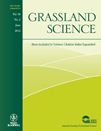
GRASSLAND SCIENCE
Scope & Guideline
Transforming understanding of grassland ecosystems.
Introduction
Aims and Scopes
- Grassland Management and Utilization:
Research on sustainable practices for managing grasslands, including grazing strategies, fertilization, and the integration of crops and livestock systems. - Plant Physiology and Genetics:
Studies exploring the physiological responses of grass species to environmental stressors, genetic diversity, and the genetic improvement of forage crops. - Ecological Dynamics and Biodiversity:
Investigations into the ecological interactions within grassland ecosystems, including plant community dynamics, soil health, and microbial interactions. - Remote Sensing and Technological Applications:
Utilization of drones and remote sensing technologies for monitoring grassland health, species identification, and precision agriculture. - Nutritional Quality and Feed Science:
Research focused on the nutritional evaluation of forage species, silage quality, and the impact of feed composition on livestock performance.
Trending and Emerging
- Technological Innovations in Monitoring:
An increasing emphasis on the use of drones and remote sensing technologies for monitoring grassland health and productivity has emerged, allowing for more precise management strategies. - Climate Resilience and Adaptation Strategies:
Research focused on the effects of climate change on grassland ecosystems and the development of resilient grass species is on the rise, reflecting a growing concern for sustainability in the face of environmental changes. - Biotechnological Advances in Forage Improvement:
Emerging studies on genetic modification and biotechnological applications to enhance forage quality and stress resilience are gaining traction, indicating a shift towards more advanced agricultural practices. - Microbial Interactions and Soil Health:
An increasing focus on the role of soil microorganisms in grassland ecosystems and their impact on plant health and productivity is evident, reflecting a broader interest in soil health as a foundation for sustainable agriculture. - Nutritional Science and Animal Performance:
Research exploring the interactions between forage quality and livestock nutrition, particularly in relation to health and productivity, is trending upwards, emphasizing the importance of quality feed in livestock systems.
Declining or Waning
- Traditional Crop-Livestock Systems:
Research on conventional integrated crop-livestock systems has decreased, potentially due to a shift towards more innovative and sustainable practices that emphasize ecological balance. - Basic Soil Chemistry Studies:
There appears to be a waning interest in basic soil chemistry without a direct application to grassland management or productivity, as more applied studies gain prominence. - Overgrazing and Degradation Studies:
While still relevant, the frequency of studies specifically focusing on the impacts of overgrazing on grassland degradation has diminished, possibly as more focus shifts to restoration and management strategies.
Similar Journals
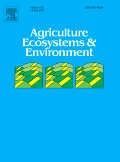
AGRICULTURE ECOSYSTEMS & ENVIRONMENT
Transforming Knowledge into Sustainable SolutionsAGRICULTURE ECOSYSTEMS & ENVIRONMENT is a premier journal published by Elsevier, specializing in the fields of agronomy, animal science, and ecology. With an impressive impact factor reflective of its stature, it ranks in the top quartile (Q1) across three significant categories, highlighting its critical role in advancing research within the agricultural and environmental sciences. The journal serves as a vital platform for disseminating high-quality research that addresses the complex interactions between agriculture and ecosystems, providing insightful methodologies and findings that inform sustainable practices. As the journal continues to converge from 1983 and through to 2025, it remains committed to offering both traditional and innovative access options while contributing to the academic community's understanding of pressing environmental challenges. Researchers, professionals, and students are encouraged to engage with the journal's comprehensive content, which is positioned among the elite in its fields, having achieved top rankings in Scopus across relevant disciplines.

CROP SCIENCE
Fostering breakthroughs in crop production and genetics.CROP SCIENCE, published by WILEY, is a premier journal dedicated to the field of agronomy and crop science, offering a platform for high-quality research on crop production, genetics, and sustainable agricultural practices. With an impactful presence since its inception in 1974, the journal has become a significant contributor to advancing knowledge in this critical field, as evidenced by its Q2 ranking in the 2023 categorizations and a Scopus rank in the 72nd percentile among its peers. The journal's aim is to disseminate innovative research findings that inform best practices and policies for enhancing crop yield and sustainability, making it an essential resource for researchers, professionals, and students alike. Although CROP SCIENCE does not currently offer open access options, the journal’s extensive readership and reputation make it a valuable asset for anyone invested in the future of agriculture.

Ecological Indicators
Leading the way in ecological research and environmental solutions.Ecological Indicators, published by Elsevier, is a prestigious journal dedicated to advancing the fields of ecology and environmental science. With an impressive impact factor and ranked in the Q1 quartile for both Ecology and Decision Sciences categories, the journal serves as a vital resource for researchers and professionals aiming to apply ecological knowledge to real-world problems. The journal covers a broad scope of topics within ecological indicators, aiming to provide comprehensive insights into biodiversity, ecosystem health, and sustainability metrics. Founded in 2001 and continuing through 2024, Ecological Indicators has established itself as a leader in disseminating significant research and innovative findings. The journal's standing is reflected in its remarkable Scopus ranks, placing it among the top percentile in its respective categories. Authors are encouraged to submit their work to share vital findings with an engaged audience of researchers, professionals, and dedicated students, ensuring the continued relevance and impact of ecological research on global environmental policies and practices.
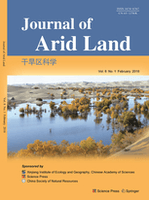
Journal of Arid Land
Exploring sustainable solutions for arid ecosystems.Journal of Arid Land, published by SPRINGER HEIDELBERG, is a pivotal platform dedicated to advancing knowledge in the fields of Earth-Surface Processes, Management, Monitoring, Policy and Law, and Water Science and Technology. With an ISSN of 1674-6767 and an E-ISSN of 2194-7783, this journal stands out as a prominent source of scholarly research focusing on the unique challenges and opportunities of arid and semi-arid environments, particularly relevant in the context of global climate change. As of 2023, it holds a commendable Q2 ranking in several critical categories, underscoring its impact in environmental science and related disciplines. The journal, which has been in publication since 2009 and is set to continue through 2024, provides unrestricted access to high-quality research that sheds light on sustainable practices and effective policies. With its focus on arid lands, the Journal of Arid Land plays an essential role in fostering interdisciplinary dialogue among researchers, practitioners, and policymakers striving to address the pressing issues faced by these ecosystems.
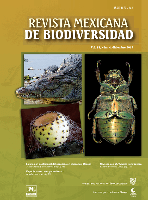
Revista Mexicana de Biodiversidad
Advancing the Science of Biodiversity in Mexico and BeyondRevista Mexicana de Biodiversidad is a prominent academic journal dedicated to the field of biodiversity and conservation, published by the prestigious Instituto de Biología, Universidad Nacional Autónoma de México. Since its inception as an Open Access publication in 2005, it has aimed to disseminate high-quality research that advances the understanding of biological diversity in Mexico and beyond. With an ISSN of 1870-3453 and an E-ISSN of 2007-8706, the journal caters to a diverse audience, including researchers, professionals, and students, by providing vital insights into ecological studies, conservation strategies, and the sustainable management of natural resources. The journal is committed to fostering scientific collaboration and promoting the significance of biodiversity in addressing contemporary environmental challenges. By publishing innovative and impactful research, the Revista Mexicana de Biodiversidad plays an essential role in the global discourse on biodiversity conservation.
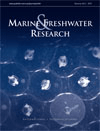
MARINE AND FRESHWATER RESEARCH
Advancing knowledge in marine and freshwater science.Marine and Freshwater Research is a prestigious journal published by CSIRO PUBLISHING that serves as a key platform for the dissemination of cutting-edge research in the fields of Aquatic Science, Ecology, and Oceanography. With an impactful presence since its inception in 1948, the journal provides critical insights into the dynamics of freshwater and marine ecosystems, promoting interdisciplinary approaches that contribute to our understanding of biodiversity and sustainability. Currently ranked in the Q2 category across major scientific domains, including Ecology and Aquatic Science, it enjoys a robust academic reputation supported by impressive Scopus rankings, such as Rank #66/247 in Aquatic Science and Rank #44/145 in Oceanography, reflecting its high citation impact and relevance. While offering a subscription-based access model, the journal remains dedicated to fostering dialogue and innovation within the scientific community, aiming to bridge the gap between research findings and practical applications in environmental management. Located in Australia, Marine and Freshwater Research is an essential resource for researchers, professionals, and students dedicated to exploring the complexities of aquatic ecosystems and advocating for their preservation.
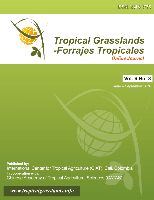
Tropical Grasslands-Forrajes Tropicales
Promoting open access to vital ecological insights.Tropical Grasslands-Forrajes Tropicales is a distinguished open-access journal dedicated to advancing the field of agronomy, ecology, and plant science, published by the renowned CENTER INT AGRICULTURA TROPICAL-CIAT in Colombia. Since its inception in 2013, the journal has fostered significant contributions to the understanding of tropical grassland ecosystems and forage technologies, making it an essential resource for researchers, practitioners, and students alike. With an ISSN of 2346-3775 and a commitment to promoting scholarly communication, it operates under the principles of open access, ensuring that high-quality research is accessible to a global audience. The journal currently holds a commendable position within the Q3 quartile categories for Agronomy and Crop Science, Ecology, Evolution, Behavior and Systematics, and Plant Science, indicating its relevance and impact in the respective fields. As of 2023, it ranks in the 37th percentile for Agronomy, 34th in Plant Science, and 32nd in Ecology, showcasing its growing influence and contribution to tropical agricultural science. By providing a platform for innovative research and insightful discussions, Tropical Grasslands-Forrajes Tropicales plays a pivotal role in addressing the challenges and opportunities in tropical grassland management and forage production.

BIOLOGY AND ENVIRONMENT-PROCEEDINGS OF THE ROYAL IRISH ACADEMY
Navigating the Complexities of Life and EnvironmentBIOLOGY AND ENVIRONMENT - PROCEEDINGS OF THE ROYAL IRISH ACADEMY serves as a vital platform for advancing knowledge in the rapidly evolving fields of biological and environmental sciences. Published by the esteemed Royal Irish Academy, this journal, with an ISSN of 0791-7945 and an E-ISSN of 2009-003X, offers a rich compilation of research articles, reviews, and proceedings that cater to the academic community in Ireland and beyond. Since its inception in 1993 and continuing through to 2024, the journal has positioned itself as a valuable resource within the Q4 category in Agricultural and Biological Sciences and Environmental Science, as detailed by the 2023 Scopus rankings. While not currently offering open access, its contributions significantly impact understanding and discussions surrounding ecological and biological challenges. Researchers, professionals, and students alike will find that the journal not only reflects current trends, but also pushes the boundaries of research, making it an essential read for anyone invested in the study of the natural world.
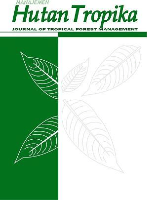
Jurnal Manajemen Hutan Tropika
Advancing sustainable practices in tropical forestry.Jurnal Manajemen Hutan Tropika, with ISSN 2087-0469 and E-ISSN 2089-2063, is an esteemed academic journal published by the Bogor Agricultural University, Faculty of Forestry in Indonesia. Since its inception in 1999 as an Open Access journal, it has been dedicated to advancing knowledge in the fields of ecology, forestry, and related environmental sciences. Aiming to provide a robust platform for disseminating research, it has achieved notable rankings within Scopus, including a Q3 classification in Ecology and Ecology Evolution, as well as a Q2 ranking in Forestry for 2023. The journal's commitment to open access ensures that vital research findings are readily available to researchers, professionals, and students alike, fostering collaboration and innovation in tropical forest management. Located at KAMPUS IPB DARMAGA, BOGOR, JAWA BARAT, this journal continues to be a significant resource for enhancing sustainable forest practices and contributing to ecological understanding in the region and beyond.

Regional Environmental Change
Transforming Research into Action for Regional ResilienceRegional Environmental Change, published by SPRINGER HEIDELBERG, is a leading journal dedicated to the critical field of Environmental Science, specifically focusing on the global and planetary changes affecting our regional environments. Since its inception in 2005 and continuing through 2024, the journal has been a pivotal platform for disseminating cutting-edge research, insights, and methodologies that address pressing environmental issues. With an impressive Scopus rank, placing it in the top 30% of journals in its category, Regional Environmental Change (ISSN: 1436-3798; E-ISSN: 1436-378X) showcases high-quality academic articles that engage with the multifaceted impacts of environmental shifts, providing researchers, professionals, and students with vital knowledge and data. Although the journal does not currently offer Open Access, it remains a crucial resource for those committed to understanding and mitigating the effects of environmental change on regional ecosystems and communities.